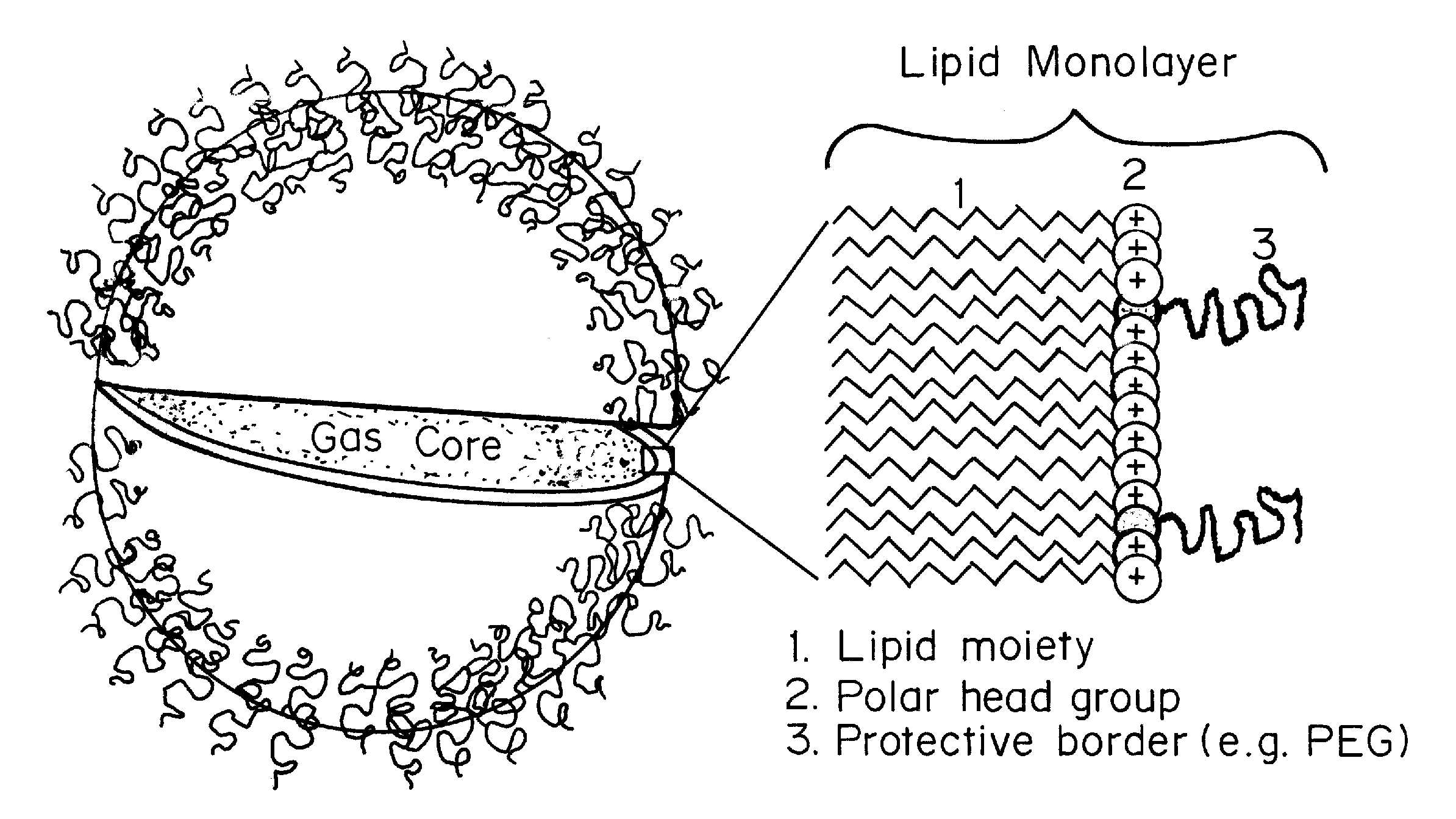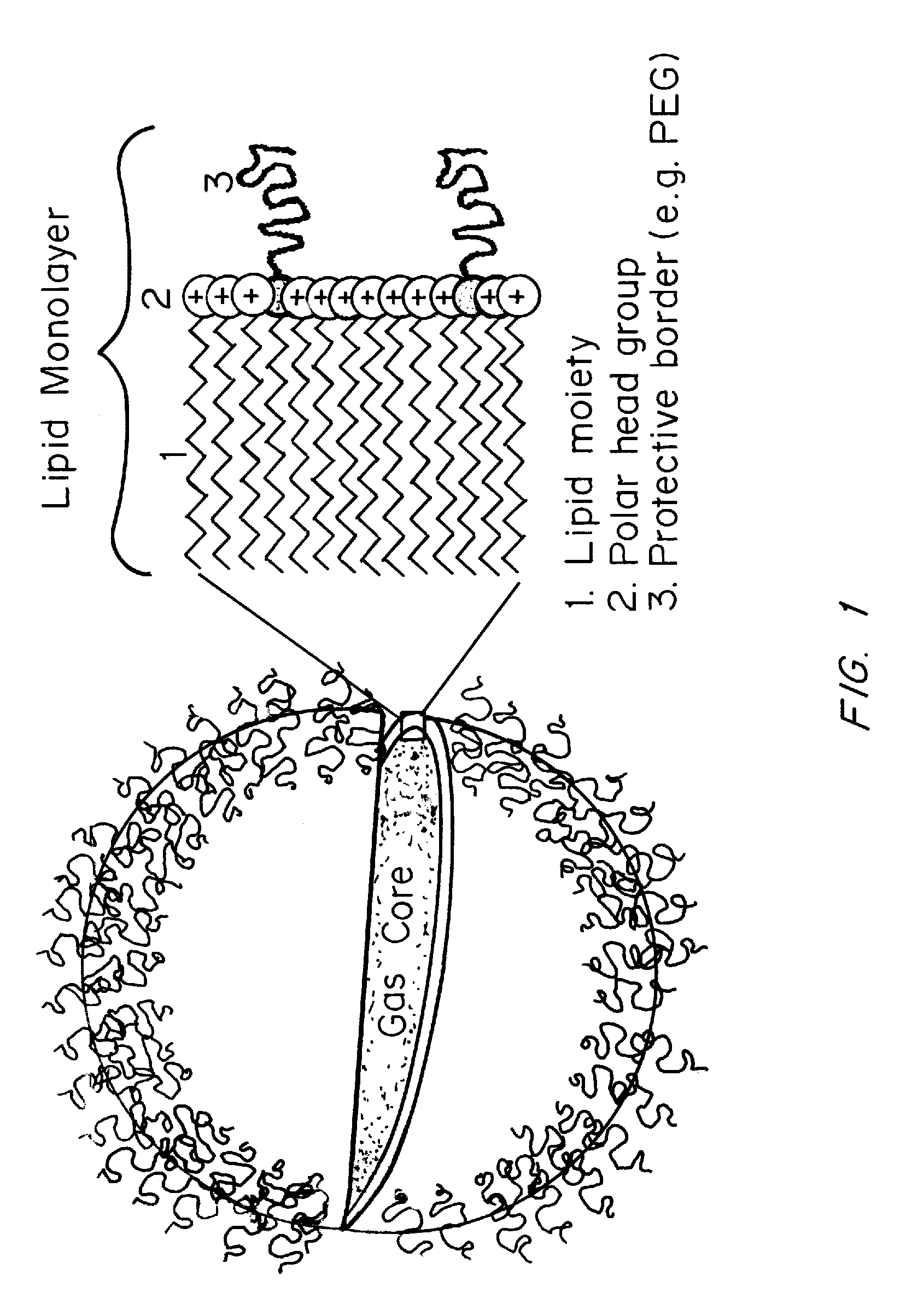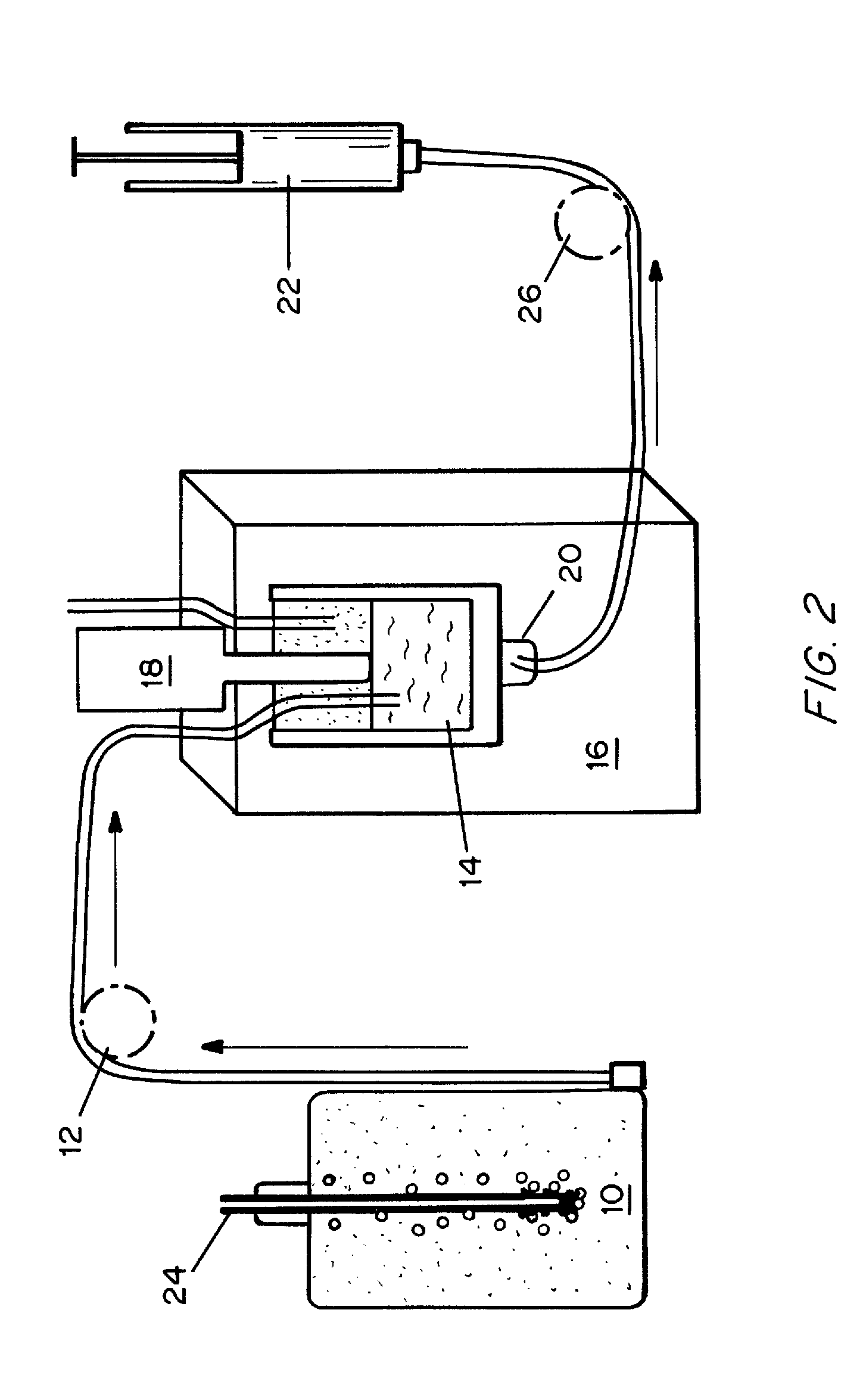Microbubbles and methods for oxygen delivery
a technology of oxygen delivery and microbubbles, which is applied in the direction of drug compositions, biocides, extracellular fluid disorders, etc., can solve the problems of ischemic injury that may take place within minutes or seconds, severe organ injury and death, failure,
- Summary
- Abstract
- Description
- Claims
- Application Information
AI Technical Summary
Benefits of technology
Problems solved by technology
Method used
Image
Examples
example 1
Formation of Concentrated Microbubble Suspensions
[0158]Concentrated microparticle suspensions were formed using the following four main steps: (1) generation of the precursor suspension, (2) sonication, (3) concentration and (4) size isolation.
[0159]1. Generation of precursor suspension. Microparticle suspensions using each of the lipids listed in Table 2 below were created. The base lipids were received in powder form (Avanti Polar Lipids, Alabaster, Ala.) and dissolved in sterile saline to create a stock solution. The same was done with PEGylated lipid. Base lipids were mixed with the PEGylated lipid in a 95-5 molar ratio. The final concentration of each precursor solution was 3 mg total lipid / mL. Lipid precursor solutions were stored at 4° C.
TABLE 2List of Base Lipids and PEGylated Lipids with TransitionTemperature (Tm) and Reduced Temperature (TR)TmTR atTR atMicrobubble Lipid ComponentsAbbreviation(° C.)25° C.37° C.Base Lipids1,2-Dilauroyl-sn-Glycero-3-C12−11.101.14Phosphocholin...
example 2
Efficiency and Rate of Gas Transfer to Desaturated Human Hemoglobin
[0170]The base lipids used in the preparation of the microbubbles were 1,2-Dilauroyl-sn-Glycero-3-Phosphocholine; 1,2-Dimyristoyl-sn-Glycero-3-Phosphocholine; 1,2-Dipentadecanoyl-sn-Glycero-3-Phosphocholine; 1,2-dipalmitoyl-sn-Glycero-3-Phosphocholine; 1-Miristoyl-2-Palmitoyl-sn-Glycero-3-Phosphocholine; 1,2-Dimyristoyl-sn-Glycero-3-[Phospho-rac-(1-glycerol)]; and 1,2-Dimyristoyl-3-Trimethylammonium-Propane. The PEGylated lipid used in the microbubbles was 1,2-Distearoyl-sn-Glycero-3-Phosphoethanolamine-N-[Methoxy(Polyethylene glycol)-5000]. All lipids were purchased from Avanti Polar Lipids, Alabaster, Ala.
[0171]Venous whole blood was withdrawn from healthy donors and stored in heparinized syringes. The mean PO2 of the venous blood was 52.1 mm Hg.
[0172]Formation of the Microbubble Suspensions
[0173]Each of the above listed lipids was dissolved in sterile phosphate-buffered saline via sonication at high power for 10 m...
example 3
Comparison of Microbubbles Encapsulating Oxygen and Unencapsulated Oxygen in Desaturated, Venous Whole Blood Tested In Vitro
[0177]The effect of oxygen-bearing microbubbles containing DPPC as the base lipid and PEG stearate as the emulsifying agent in a molar ration of 95:5 (base lipid: emulsifying agent), which were prepared according to the method of Example 1 without the concentration and size isolation steps, on a 2 mL sample of desaturated, venous whole blood from a healthy human volunteer was studied. In one test tube, 0.2 mL of the microbubbles were added to 2 mL of desaturated, venous whole blood. To a second test tube, 0.2 mL of pure oxygen gas (unencapsulated) was added to 2 mL of desaturated, venous whole blood.
[0178]The test tubes were inverted once, and co-oximetry and blood gas values measurements were taken using a Radiometer ABL800 X blood gas machine.
[0179]The test tube containing microbubbles had a pH of 7.31, PCO2 of 50 mmHg, PO2 of 248 mmHG, and the amount of oxyg...
PUM
 Login to View More
Login to View More Abstract
Description
Claims
Application Information
 Login to View More
Login to View More - R&D
- Intellectual Property
- Life Sciences
- Materials
- Tech Scout
- Unparalleled Data Quality
- Higher Quality Content
- 60% Fewer Hallucinations
Browse by: Latest US Patents, China's latest patents, Technical Efficacy Thesaurus, Application Domain, Technology Topic, Popular Technical Reports.
© 2025 PatSnap. All rights reserved.Legal|Privacy policy|Modern Slavery Act Transparency Statement|Sitemap|About US| Contact US: help@patsnap.com



